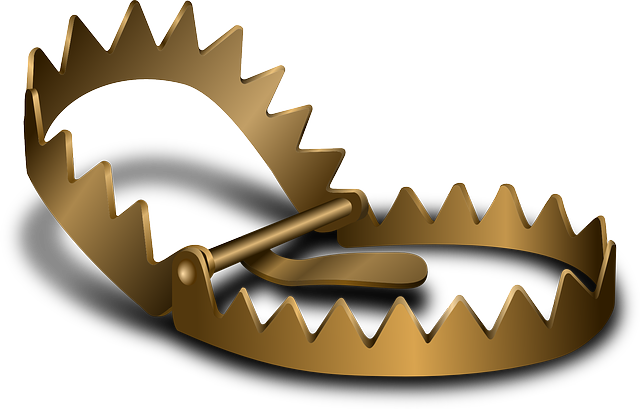Trading is a dynamic and complex endeavor, filled with various strategies, market trends, and, at times, deceptions that can catch even seasoned traders off guard. One such deception is the bear trap, a phenomenon that has the potential to disrupt traders’ expectations and lead to unexpected outcomes.
In this article, we will embark on a comprehensive exploration of the what identify a bear trap, from its definition to its historical examples, and equip traders with strategies to navigate these challenging scenarios.
Background: The Nature of Trading and Market Deceptions
Trading is akin to navigating a constantly changing landscape, where trends and patterns are ever-evolving. Within this landscape, traders encounter various traps—situations where the market appears to signal a certain direction, only to suddenly reverse and catch traders off guard. The bear trap is one such trap that traders need to be wary of.
Defining the Concept: What is a Bear Trap?
In order to trade a bear trap, or perhaps more importantly, not get ran over by one, you must understand what one is.
Basic Definition and Overview
At its core, a bear trap is a market scenario where prices appear to be heading downwards, suggesting a bearish trend. However, this downward movement is deceptive, as prices suddenly reverse and surge upwards, trapping traders who had anticipated a continuation of the downward trend. The bear trap vs. lies in the false signals conveyed by the initial price decline.
Origins of the Term ‘Bear Trap’

The term ‘bear trap’ finds its origins in the world of hunting, where a bear trap is designed to capture a bear’s paw. Similarly, in trading, the bear trap captures traders who have taken bearish positions. The term bull trap’s historical significance adds depth to the concept, reminding traders of the deceptive nature of markets.
The Anatomy of a Bear Trap
The bear trap unfolds in distinct stages, each playing a crucial role in luring traders into false expectations.
Initial Signs and the Deceptive Drop
The trap begins with the initial signs of a price drop. Traders observing this decline may perceive these price drops as an opportunity to profit from short-selling or other bearish strategies. However, this drop is a calculated move to mislead traders.
Consolidation: The Calm Before the Storm
Following the initial decline, prices stabilize and consolidate. This phase creates a sense of calm and reassurance, reinforcing traders’ expectations of a continued downtrend. Unbeknownst to them, this stability is the calm before the storm—the impending reversal of bullish trend. Short sellers will often become more comfortable with their positions, or even add to their existing short position. This is a deadly mistake for accounts.
The Swift Reversal: The Trap Springs
Just as traders feel confident in their bearish positions, the trap springs. Prices unexpectedly surge upwards, catching traders off guard and forcing them to cover their short positions hastily. This rapid reversal in price action results in losses for those who were trapped in the bearish mindset.
Factors Leading to Bear Traps
Several factors can contribute to the formation of bear traps. News releases, especially those that conflict with prevailing sentiment, can trigger sudden reversals. Large institutional players with the capacity to move markets can also initiate bear traps for their benefit. Additionally, psychological reactions within the market, such as panic selling, can amplify the effects of bear traps.
Spotting a Bear Trap: Key Indicators
While bear traps are inherently deceptive, there are indicators that can potentially signal their presence.
Technical Analysis Tools
Technical analysis involves studying price charts, patterns, and indicators to predict future price movements. Traders can look for chart patterns like the “W-bottom,” where prices initially decline, consolidate, and then reverse upwards. Volume analysis can also offer insights, with declining trading volume during the price drop phase indicating a potential bear trap.
The Role of Market Sentiment
Understanding market sentiment is crucial for spotting bear traps. Sentiment analysis tools gauge the collective emotional state of traders and investors. Sudden shifts in sentiment, such as a swift change from bearish to bullish, can be a signal of an impending bear trap.
There are many traders out there that are looking for the next move. If they get “caught offside”, it can often lead to these kind of troubles. For example, a company could be in serious financial trouble, but then a surprise announcement of a pending buyout form a larger one can send the market volume higher, as traders not only try to get rid of bearish positions, but some will also jump into the market as it finds itself suddenly undervalued. Quite often, this is the beginning of a bullish trend reversal. The bullish trend that happens after these moves can often lead to massive runs for long term investors.
Historical Examples: Bear Traps in Retrospect
Looking back at historical examples of bear traps can provide valuable insights into how these scenarios unfold and impact traders. One notable example is the 2008 financial crisis, where a series of false downward movements lured many into short positions before a significant market rally occurred.
In an illustration of a bear trap, let’s explore a situation where traders closely monitored a critical support threshold at $425 for the SPDR S&P 500 ETF (SPY), which mirrors the US stock market’s performance. Believing that a breach beneath this support indicated a bearish indication, a group of traders engaged in short selling. Yet, the price unexpectedly reversed course, leading to financial losses for these short sellers.

Protecting Your Portfolio: Strategies to Navigate Bear Traps
Navigating bear traps requires a combination of caution and preparedness.
Setting Stop-Loss Orders
Placing stop-loss orders can help mitigate losses in the event of a sudden reversal stock price. These orders automatically trigger a sale if prices move against the trader’s position by a certain amount.
Diversification and Patience
Diversifying one’s portfolio across different assets can help spread risk and reduce the impact of a single bear trap. Additionally, practicing patience and avoiding impulsive reactions can prevent traders from falling into the bull traps themselves.
Conclusion: Trading Wisely in a World of Deceptions
The bear trap exemplifies the unpredictability of trading and the importance of being vigilant. By understanding the anatomy of a serious bear trap pattern, recognizing key indicators, and adopting protective strategies, traders can navigate the intricate world of trading with greater confidence. Continuous learning and adaptation remain essential for success in a landscape where deceptions can turn the tide in an instant.
Trading volume is important. This means that you must be able to get out of the market when necessary. At PrimeXBT, we offer CFD, or Contract for Difference markets, which means that you will not need to “borrow assets” in order to short them. This means that you are essentially just betting on the underlying asset, regardless of direction you choose. It is easy to get out of the markets if the position goes against you.
What does bear trap mean?
A bear trap is a market situation where prices initially appear to be heading downwards, leading traders to believe in a bearish trend. However, prices suddenly reverse and surge upwards, trapping traders short sellers who had taken bearish positions.
Is a bear trap bullish or bearish?
A bear trap initially appears bearish due to the downward price movement. However, it is ultimately bullish as the prices reverse trend reversal and surge upwards, catching traders off guard. Short sellers find themselves in serious trouble, and will have to open long positions to offset the short position they find themselves in. The short selling of markets can be very dangerous because of these times.
What is bear trap crypto?
In the context of cryptocurrency trading, a bear trap refers to a scenario where crypto prices seem to be declining, but on short sell, they suddenly reverse and rally upwards, causing losses to those who had bet on the price decline.
The content provided here is for informational purposes only. It is not intended as personal investment advice and does not constitute a solicitation or invitation to engage in any financial transactions, investments, or related activities. Past performance is not a reliable indicator of future results.
The financial products offered by the Company are complex and come with a high risk of losing money rapidly due to leverage. These products may not be suitable for all investors. Before engaging, you should consider whether you understand how these leveraged products work and whether you can afford the high risk of losing your money.
The Company does not accept clients from the Restricted Jurisdictions as indicated in our website/ T&C. Some services or products may not be available in your jurisdiction.
The applicable legal entity and its respective products and services depend on the client’s country of residence and the entity with which the client has established a contractual relationship during registration.




